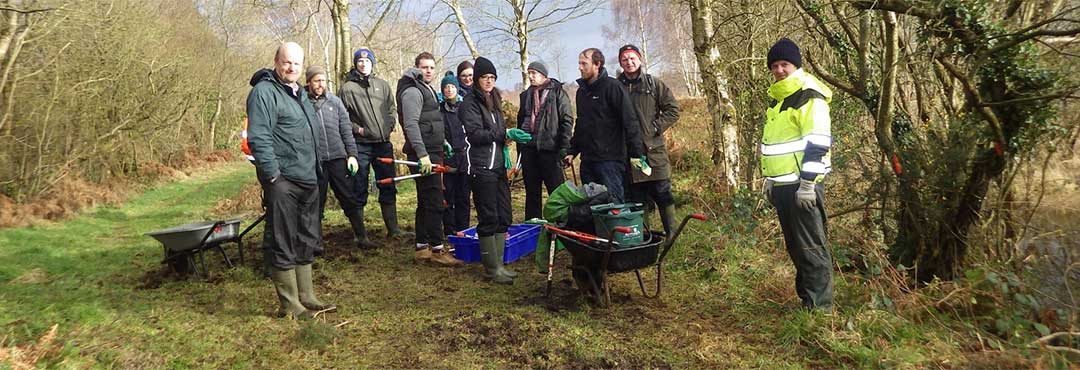It is not easy to define this type of habitat. Parkland is more likely to be a result of land management over a long period of time than a natural community of plants. There are two main parts:
- Wood-pastures and parklands with old veteran trees
- Other, now changed sides (farming, commercial forestry…) with old trees which should be protected
Veteran (meaning old) trees and parklands can be beautiful and play an important role for tourism. Parklands are very often associated with houses or former sites, isolated and separated with fences, walls or ditches. Animals, streams, ponds and ancient woodland blocks make this habitat interesting.
Estimates range from between 10,000 to 20,000ha in the UK, with about 1,100ha in Northern Ireland. The vast majority (1000ha) is in private ownership.
Historical info about Parkland
In the past, the land around manor houses was managed by tenant farmers. During the 17th century, avenues of trees, ponds and other embellishments became popular, mainly to demonstrate the power of the landlord. This was replaced, in the middle of the 18th century, by the creation of parklands. With the famine came a decline in newly created parkland, probably for the lack of money.
There are not a great many old trees in Northern Ireland because of a long history of woodland clearance and the high frequency of storms, like the “Big Wind” in 1839 destroyed a huge amount of veteran trees. They do exist in places if you look hard enough.
Species living in and around Parkland
Red squirrel, common pipistrelle, song thrush, spotted flycatcher and tree sparrow are priority species found in these habitats. The presence of these animals increases the importance of protecting this habitat. Parkland is also valuable for invertebrates and lower plants like lichens, mosses, fungi and liverworts. Bats and birds find valuable places to live and breed.
Threats to Parkland
Different threats exist, but one of the most important one is the lack of knowledge about the importance of old veteran trees in parkland systems.
- Planting with coniferous trees and the end of management leading to loss of old trees and therefore habitat of moss, lichens and invertebrates. Diseases, air-pollution and cutting/removal are also threats.
- A lack of replacement and therefore introduction of young trees produce old woodland and loss of specialist species. The ancient trees become older and older, eventually dying but with no new trees to grow and take their place.
- Damage to roots and nutrient enrichment as well as a lack of water have severe consequences to veteran trees.
- Under-grazing or over-grazing leads to scrub and bracken intervention, compact soil and damage to bark.
- Climate change may lead to a change in the composition of plant communities.
References
Environment & Heritage Service (2005): Northern Ireland Habitat Action Plan, Parkland. Belfast. http://www.ni-environment.gov.uk/parkland_pdf.pdf [last access: 26 August 2008]

